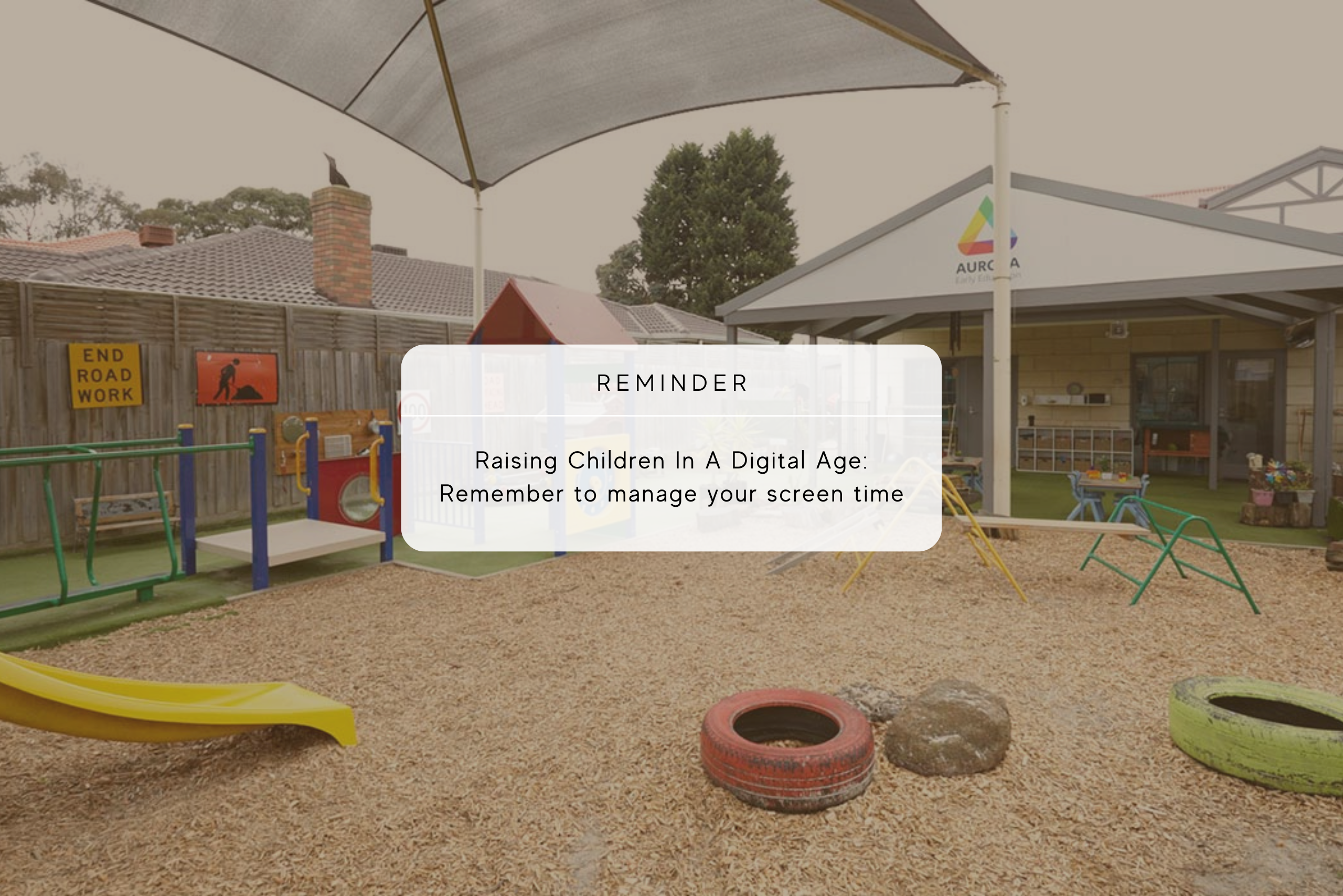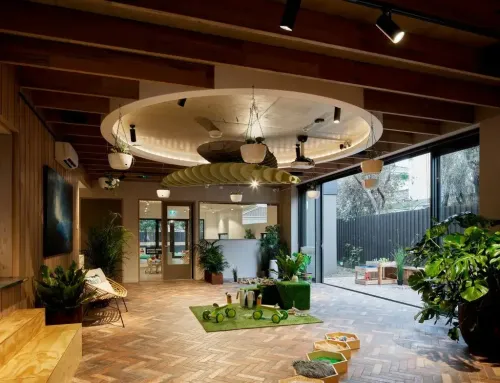For many parents, there comes a time in the day when you just need a moment for sanity. You’re exhausted and fed up, and you’ve tried your best, but you just need your little one to quietly watch something on a screen for a moment of freedom. However, as much as it gives you relief, parents often feel guilty for promoting screen time in this way.
Today’s blog is about the reality of raising children in the digital age. Whilst we believe a childhood “unplugged” is best for development, there are also many benefits to utilising technology. That being said, screen time can primarily be useful and enjoyable for families when used in small amounts. It allows us and our children to connect with others, be creative, and learn.
We recognise that having a screen-free lifestyle is unrealistic. Instead, we are here to share 7 tips for you to build a healthy, balanced, and guilt-free relationship with screen time in your family.
Aurora Early Education’s aim is to utilise the benefits of what technology has to offer, with cognitive, physical and mental wellbeing in mind, to set our children up to be engaged with the world around them. Our centres in Doncaster, Melbourne CBD, and Rowville selectively use technology and encourage children to use it appropriately as an educational tool.
Australian health guidelines for screen time:
In Australia, the current recommendation is for no more than 2 hours of screen time per day for children, with screen time not recommended for children under 2 years (except video chatting).
Between 18 and 24 months, screen time should be limited to watching educational programming with a caregiver. And for children 2 to 5 years, one hour of high-quality content screen time is ideal.
Let’s dive into the tips:
1. Focus on including healthy non-screen activities, rather than excluding screen time.
More important than the absence of screen time, is the presence of engaging activities and healthy habits, including daily physical activity, reading, creative play, social time with family and friends, and good quality sleep. 10-12 hours of sleep, and 1 hour of exercise are essential for your child’s wellbeing. Screen time can be a part of a healthy lifestyle when these screen-free activities make up the majority of the day, and when sleep and energy are functioning well. However, if you are noticing your child having more difficulty with sleep, learning, mood, socialising, or physical activity, then it might be time to focus more on managing screen time. Here is a helpful checklist:
Is your child:
- Sleeping enough?
- Physically healthy?
- Mentally and emotionally healthy?
- Engaged with school?
- Connecting socially with family and friends, online and offline?
- Enjoying a variety of hobbies and interests?
- Doing physical activity every day?
- Having fun and learning while using screens?
- Using quality content?
If you answer yes to most or all of these questions, your child is probably using digital technology in a balanced way as part of a healthy lifestyle.
At Aurora, we ensure your child’s day is filled with activities and play to support their physical and mental health. Practices such as meditation, music, language learning, art making, gardening and more. Our curriculum is always evolving to best suit our children’s thriving interests.
2. Model the screen time behaviour that you want your child to adopt.
There is a strong relationship between parents’ screen time and that of their children. We must not underestimate how much children see their parents as role models. Therefore, ensure you maintain your own active lifestyle and set a good example with your own safe and healthy screen habits, some of the following tips might help you achieve this!
3. Set household guidelines that encourage healthy screen time habits for the whole family.
- First thing in the morning, prioritise going outside and letting your eyes adjust to the natural light, before any screen time. Sunlight exposure first thing in the morning sends a ‘wake up’ signal to the body, improving sleep and energy levels for both children and adults!
- 30-60 minutes before bedtime, turn off screens and remove them from bedrooms. Even better, make bedrooms a ‘screen-free zone’ and create a charging station that is in a common area.
- Another screen-free zone can be the dinner table. Or you could create a ‘no screen’ policy for during meal times.
- Turn off the TV and other devices during meals and try not to leave the TV on in the background – use music instead.
- Designate screen-free days for your children or even the whole family.
- Set family guidelines about the maximum time on screens per day and stick to them. Remember to involve older children in the decision-making.
4. Focus on the quality of the content your child is engaging with.
Ask yourself, is the content:
- Engaging: Does it have age-appropriate features that maintain attention and invite participation?
- Meaningful: Can children relate the content to their lives?
- Optimally Challenging: Meaning not too difficult or too easy?
- Interactive (in the physical or social sense): Young children can actually form relationships with screen characters, which improves their learning.
As much as possible, avoid fast-paced programming, which young children have a hard time understanding, violent content and apps with a lot of distracting content, and apps with a lot of advertising since young children have trouble telling the difference between ads and factual information.
5. Take part in screen time with your child.
Participating in screen time with your child allows you to engage in conversations about the content together, encouraging spontaneous opportunities for learning. It helps children understand the content, and ask questions, and it allows you to directly monitor the content your child is engaging with.
When watching programming with your child, discuss what you’re watching, talk to them about what they are seeing, and educate them about advertising and commercials. Point out good behaviour, such as cooperation, friendship, and concern for others. Make connections to your own life, such as familiar people and places, and meaningful events. Ask them questions too, and create the opportunity to take the content from the screen and make it useful for real life.
6. Engage with your child about their use of screen time.
Start to practise asking both yourself and your child: why are they using this device right now? Is there something else they could be doing?
Depending on their age, have conversations educate your child about the consequences of excessive screen time, and encourage them to self-regulate screen time. This gives them a sense of autonomy over their choices and is an important skill to develop as they grow up and continue to face the distractions of technology.
7. Monitor the use of screens, or set screen time limits.
Keep in mind that 1 hour per day is ideal, and the recommended maximum per day is 2 hours.
Due to the many uses of our devices, it can be difficult to monitor how much time our children might be spending on screens. Screen time monitoring apps can give you insight into your child’s screen time and offer screen time limits for apps and devices. You could also use a timer or alarm clock to enforce the screen time you set. Remember that supportive rather than controlling styles of communicating rules may be beneficial. Knowing the amount of screen time might inspire you to engage with some of these recommendations to create a better balance for your child.
We hope these tips will be helpful as you navigate the use of technology in your family. It is important we encourage using screens in ways that build creativity and connection with family and friends, rather than as a mindless distraction.
We know in this digital age, it is unlikely we can escape screens altogether (sure, more like highly unlikely), but it is all about being intentional with the way we use our devices, and why.
If you are interested in internet safety navigation tips, have a read of our previous blog post about promoting a safer internet here.
Research Links/Resources:
https://aifs.gov.au/resources/short-articles/too-much-time-screens
https://raisingchildren.net.au/toddlers/play-learning/screen-time-media/screen-time





